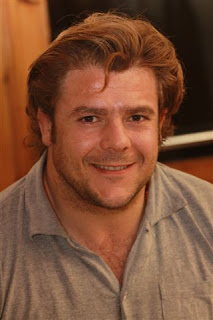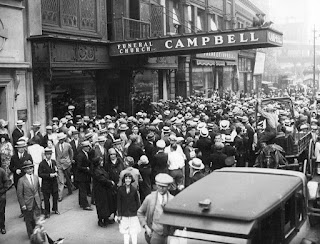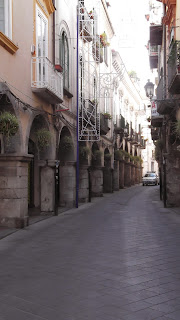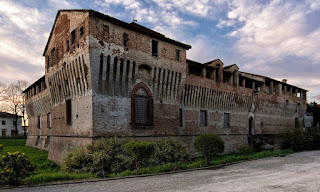Prop nicknamed "il Barone" now bona fide Knight
 |
| Andrea lo Cicero |
The 113 kilo (249lb) prop forward played rugby for the Azzurri between 2000 and 2013, retiring with 103 caps. At the time it was the highest number won by any player and Lo Cicero was only the second player in the history of the national team to win more than 100 caps.
He made his debut against England at the Stadio Flaminio in Rome in March 2000, as the Five Nations Championship became the Six Nations with the inclusion of Italy for the first time, and ended his international career in the capital, although this time at the Stadio Olimpico, in a 22-15 victory over Ireland in the 2013 Championship, in front of a crowd of 80,054.
Highlights along the way included an outstanding performance in the 2004 Championship, when Italy beat Scotland in Rome and Lo Cicero was named in the BBC's Dream XV. Later that year he was the only European player selected for the Barbarians team that took on New Zealand, in which he scored a rare try.
He also played in three rugby World Cups, in Australia in 2003, France in 2007 and New Zealand in 2011.
In his club career, Lo Cicero represented Amatori Catania before moving to Rovigo and then Rome, where he was part of an Italian Championship-winning team in 1999-2000.
He played in France for the first time when he joined Toulouse in 2001 and, after three seasons back in Italy with L'Aquila, finished his career with his longest spell at any one club, playing for Racing Metro for six years, winning promotion to the top flight of the French Championship in 2009 and twice being named best prop in the Championship.
Lo Cicero acquired the nickname "il Barone" because his ancestry could be traced back to Sicilian nobility. He became interested in rugby through an uncle, Michele, who also played for Amatori Catania, but showed early promise also in canoeing, giving up only because he developed such large leg muscles he could not fit comfortably into the canoe.
Having grown up by the sea, however, he maintained an interest in water sports and has become an accomplished sailor, competing in the 2013 America's Cup as a crew member for the Luna Rossa team.
Since retiring from competitive sport, Lo Cicero has established a second career as a TV presenter, drawing on his passion for gardening, restoring antique furniture and renovating houses.
He hosts a Sky Italia show called Giardini di Incubo which can be roughly translated as Garden Nightmares, and appears in another, L'Uomo in Casa, which offers tips on DIY and renovation projects. He also guests in sports and cookery shows, runs a business that harvests saffron and helps disabled children through pet therapy.
An ambassador for the international children's charity UNICEF, and a former volunteer for the Italian Red Cross, he was made a Knight of the Order of Merit of the Republic in January 2015.
 |
| Catania's impressive Baroque style Duomo |
Catania, where Andrea Lo Cicero grew up in the shadow of the still-active volcano Mount Etna, overlooking the Ionian Sea, is the second largest city in Sicily, with a population of 315,000. It is notable for its Baroque city centre, which is a UNESCO heritage site, but also has some outstanding classical buildings, ancient remains buried over the centuries. Greek and Roman cities built on the site of the present city disappeared under layers of lava from Etna's eruptions but parts of them have been unearthed, including an impressive Greek-Roman theatre.
Travel tip:
The Stadio Olimpico, which hosts home matches for both the Lazio and Roma football clubs as well as rugby and football internationals, is located by the banks of the River Tiber, a short distance to the north of central Rome. It was built in the 1930s as part of the Foro Mussolini (later Foro Italico), a large sports facility which Italy's dictatorial leader built to glorify the country's sporting past and celebrate its future. It became the Stadio Olimpico as the host venue for athletics events at the 1960 Olympic games. A roof was added for the 1990 World Cup. Outside can be found Roman-style mosaics, statues of athletes and an obelisk dedicated to Mussolini.
More reading:
Sara Errani's claim to be Italy's best
Alessandro Costacurta, the champion of football longevity
Also on this day:
1917: The birth of Sistine Chapel Choir director Domenico Bartolucci
1983: The birth of Olympic archery champion Marco Galiazzo
(Photo of Catania's Duomo by Urban CC BY-SA 3.0)
Home














